Last Updated on July 27, 2023
The perfect tool for making precise, intricate cuts in drywall does not require much effort. With a jigsaw, you can quickly shape your drywall. But when using one isn’t as straightforward as it may seem, don’t sweat it.
While jigsaws are powerful tools, they typically aren’t well suited for cutting thinner materials like drywall if they aren’t used properly. Therefore, to complete drywall-cutting jobs confidently and accurately, understanding how to use a jigsaw safely and correctly is essential.
So are you ready to cut drywall like a pro? Here are all the tricks you’ll need to make perfect cuts fast.
How Can You Cut Drywall With a Jigsaw: Easy Steps

Cutting drywall may seem daunting, but it isn’t. With the proper tools and techniques, you can easily cut Sheetrock with a jigsaw and have perfectly neat edges.
Here are the steps to get you started:
Gather the Tools:
- Protective Gear: safety glasses, drywall dust mask, gloves, etc.
- Jigsaw with a fine tooth blade
- Tape measure or other straight-edge tools
- Material to support the sheetrock during cutting

Step 1: Preparing the Jigsaw for Use on Drywall
Before cutting drywall with a jigsaw, it is necessary to properly prepare your work area to ensure safety and precision while cutting. Make sure you use a blade specifically designed for drywall cutting or, as indicated in your jigsaw instructions. This will ensure that you get an accurate cut without damaging the material.
Also, adjust your jigsaw’s speed and power settings according to the manufacturer’s instructions. This will prevent motor damage due to excessive pressure or vibration when cutting thick materials such as Sheetrock.
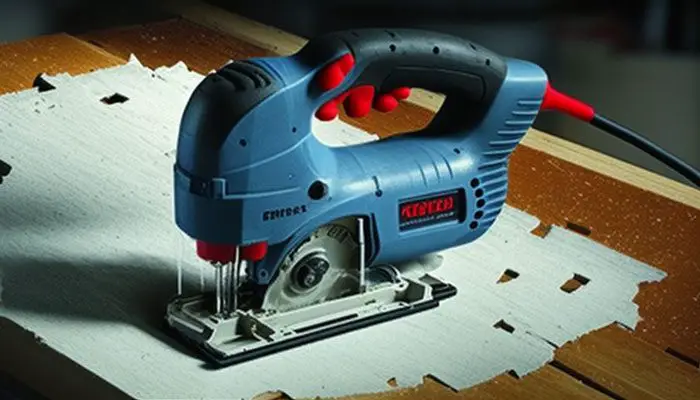
To further prepare, be sure to remove any objects or debris that are close to where you will be working. This way, nothing gets damaged by flying pieces of drywall during cutting.
Step 2: Marking the Cut Lines On the Drywall
After preparing the workspace and adjusting the jigsaw accordingly, it’s time to mark out lines for cutting on the Sheetrock sheet. Using a pencil or marker pen, clearly draw out all lines that need to be cut according to the desired shape and size. If necessary, use a straightedge for a long straight line to ensure accuracy.
It is important at this point that these marks are visible and exact, as they will determine how precise your cuts will eventually look once finished. Any mistakes made here can result in misaligned pieces.
Also, this leads to potential issues further down the line when hanging up newly cut sections of Sheetrock on ceilings or walls, etc.
Step 3: Executing Cuts On the Sheetrock
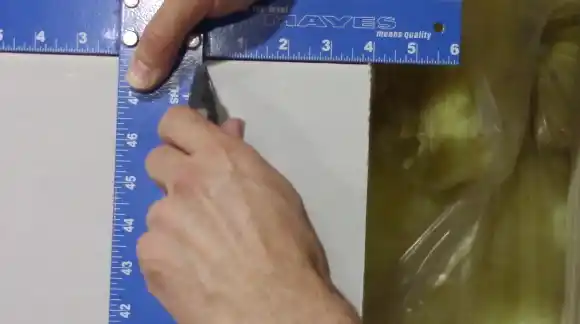
Now that you have established markers to guide yourself along while executing cuts with a jigsaw, regardless of whether it’s straight or curved sections. Start by slowly running through each marked line one at a time.
Also, maintaining steady pressure along each stroke until fully completed/finished with each one individually before moving on to the next section.
Repeat this process until all markings have been accounted for/cut out correctly & accurately. Cutting at this stage requires the correct amount of pressure and changing directions whenever necessary, especially around corners and curves.
If you don’t do this, it could result in an unwanted, rough-looking finish along the edges.
Step 4: Finishing Touches
Once all required cuts along marked lines have been made using a jigsaw effectively/efficiently. Lightly sand down any rough edges if needed afterward before finally getting ready to hang newly-made pieces.
After you’ve done that, use caulking or joint filler to seal the seams between sections. This will create a smooth surface after it dries. Then your project will be complete.
Common Mistakes that May Arise When Cutting Drywall with a Jigsaw
Drywall installation is a delicate process that requires precise cutting and accuracy to ensure a neat and professional finish. Unfortunately, even experienced professionals can make mistakes. Here’s what to watch out for jigsawing drywall.
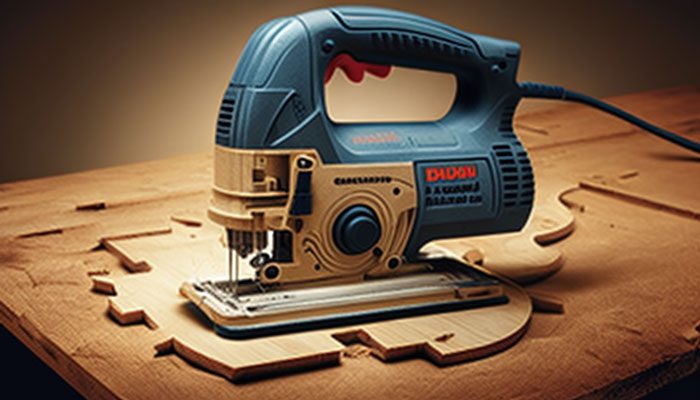
Poor Measuring and Marking
One of the most common mistakes that can occur is not taking accurate measurements. It is essential to take precise measurements and use a straight edge or square to ensure they are accurate before marking the drywall.
Poor measuring and marking can lead to inaccurate cuts that do not fit together properly, leaving gaps in between sections or resulting in an overall poor finish. Also, making incorrect marks due to distractions or lack of attention can lead to errors and result in having to start the project over again.
Poor Tool Usage and Safety Practices
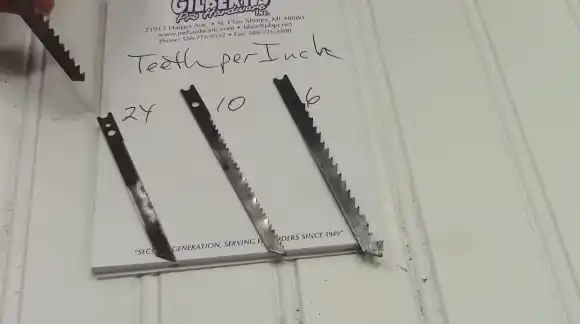
Using the wrong type of blade for the job is another mistake to beware of. Different blades are designed for different materials, so it is important to research which type of blade will work best for your project before beginning.
It’s also a mistake to not wear safety gear when using power tools, as this can cause serious injuries or even death. Likewise, not following safety instructions when operating electrical equipment can also be dangerous and should always be done correctly.
Incorrect Cutting Technique
The incorrect cutting technique is another mistake that may occur when using a jigsaw on drywall material. Cutting too quickly can cause uneven edges or gouges in the surface, which takes extra time and effort to repair or replace altogether.
Aside from that, if you cut the pieces of wood at the wrong angle, they might not fit together correctly. For example, the corner pieces might be cut at angles rather than straight down. If you make this type of mistake, you may have to add more drywall to compensate for any gaps between sections that were cut at the wrong angle.
Cutting Drywall With a Jigsaw: Tips You May Need
Drywall cutting with a jigsaw can be daunting, but it doesn’t have to be. Here are some tips to help make the job easier:

- Select the right tooth profile for your jigsaw blade.
- Pick the proper length and width for your drywall project.
- Make sure the blade is sharp enough.
- Must use gloves and wear safety glasses.
- Prepare your materials and space properly before you cut.
- Make sure your jigsaw is adjusted properly before making cuts.
- Pay attention to any surrounding furniture & objects.
- Measure at least twice to ensure the accuracy of the cut.
- Trim away rough edges using a utility knife or other tool.
What Type of Jigsaw Blade Should Be Used to Cut Drywall?
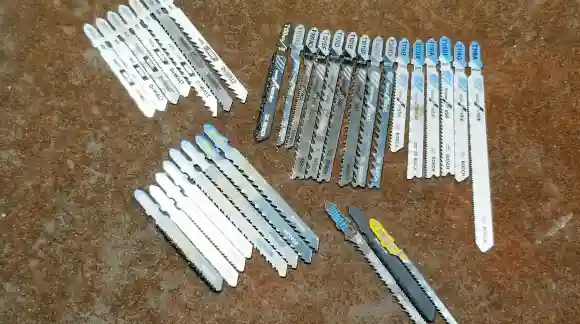
When cutting drywall, it is crucial to use the correct blade type to avoid damage and ensure a clean cut. A medium tooth carbide jigsaw blade is recommended for cutting through drywall due to its durability and ability to produce a smooth finish.
The number of teeth per inch on the blade should be between 10-14 TPI (teeth per inch) to navigate the material without too much chipping or tearing. Aside from that, ensure the blade has a sharpened edge, as dull blades are more likely to tear or crack the drywall surface.
Also, keep your blades cool by running them underwater from time to time and having multiple blades on hand so you can switch them out as needed. Don’t forget that jigsaw blades wear quickly when working with drywall. So it’s best practice to replace them often for optimal results.
For example, Universal U Shank Scroll Jigsaw Blades, Professional Saw Blades, Carbide Grit Jig Saw Blade, and General Purpose Jig Saw Blade are some good quality jigsaw blades that are worth considering.
Advantages & Disadvantages of Using a Jigsaw to Cut Drywall
As you know, using a jigsaw can also be difficult for beginners as it requires an experienced hand to properly control the saw. Also, cutting drywall with a jigsaw has its advantages and disadvantages.
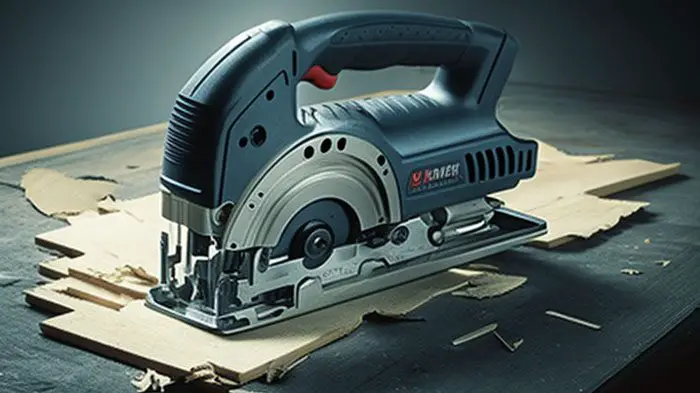
Here are some of the most common:
Advantages:
- Ability to create curved shapes.
- Faster and more accurate than traditional hand saws.
- Maneuverability in tight spaces.
- Faster than other cutting methods.
- Smaller pieces can be cut with more accuracy.
- A variety of blades are available for different cutting.
Disadvantages:
- High risk of damage to the drywall surface due to vibration and friction from the blade.
- Difficulty in controlling the drywall cut’s angle, depth, and distance with a jigsaw.
- Need for special blades to prevent drywall damage.
- Low power output & limited depth.
- Difficulty controlling the tool.
Are There Optimal Speeds for Cutting Through Drywall With a Jigsaw?
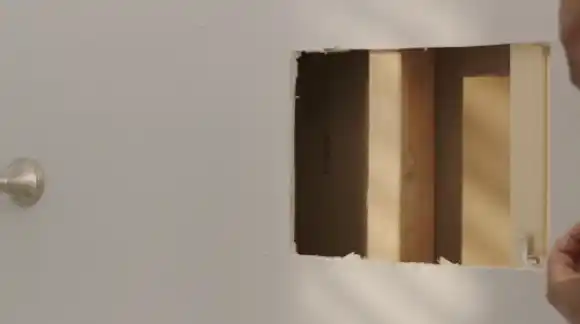
The right speed for cutting drywall with a jigsaw will depend on the shape of the cut. A straight cut can be made at a higher speed, while curved cuts should be done at a slower speed. The jigsaw should always be started at a low to medium speed and accelerated to its full speed, as this helps reduce splintering and tearing of the drywall.
When making curves, it is important to press down firmly on the jigsaw so that the heel of the shoe remains in contact with the drywall sheet, which helps prevent kickbacks. Scroll cutting requires even slower speeds to ensure that each cut is clean and neat.
Try to set the speed correctly to prevent overheating so that the motor does not overheat, damage the saw blade, or cause splintering.
How Thick Can Drywall Be Cut With a Jigsaw?
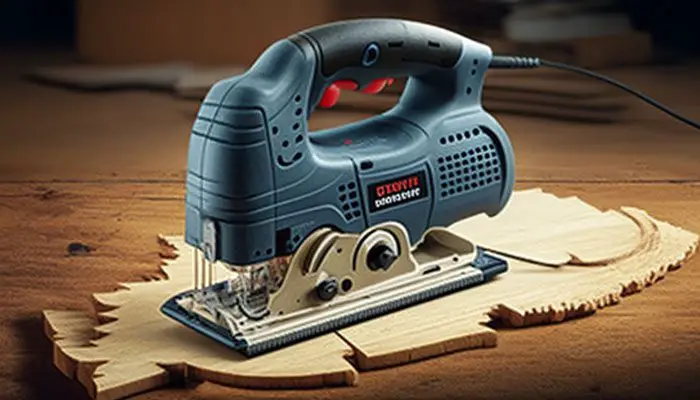
Put your jigsaw to good use and make precise cuts through up to 1.5 inches of drywall with ease. If you’ve got some tougher materials like hardwood, no problem bump it up a bit and slice 3/4 inch thick pieces in no time flat.
Just remember to arm yourself with the right blade for stellar results, one specially designed for cutting drywall will do wonders.
This will help prevent any cracking or tearing of the material when making the cuts. Using a few pilot holes when making long cuts with a jigsaw is recommended to ensure accuracy and reduce any chance of veering off course.
Is It Better to Cut Drywall With a Jigsaw From the Front or Back?
Using a jigsaw to cut the drywall from the front side is generally recommended. Cutting from the back can cause the edges of the drywall to become frayed and uneven, making it more difficult to achieve a smooth finish.
As mentioned above, before beginning, it is essential to make some pilot holes in the wall with either a drill or an awl. This will help guide the blade of the jigsaw when cutting through the material. After creating pilot holes, start your cut from one corner and slowly follow along your outline until you reach the other corner.
This will help ensure accuracy and a clean edge around your cut-out piece of the existing drywall. Also, using a jigsaw with a low-speed setting and high-quality blades designed specifically for cutting through drywall can further ensure smooth results.
Unlock Your Inner Carpenter: Cut Drywall with a Jigsaw
The art of cutting drywall requires an experienced eye and skillful hand. But if done right, using a jigsaw can yield great results or ruin your project. Consider all angles when deciding whether this is the route you want to take so you don’t end up facing any unforeseeable drawbacks.
Ready to attempt a project involving drywall? A jigsaw is a perfect tool to create curves and complex shapes with speed and efficiency. Before you set out, consider all precautions and steps mentioned above. This will ensure your end result goes off without a hitch.



